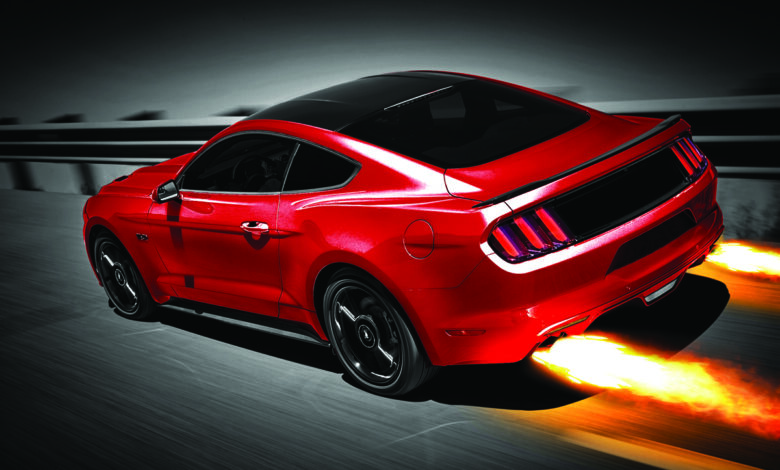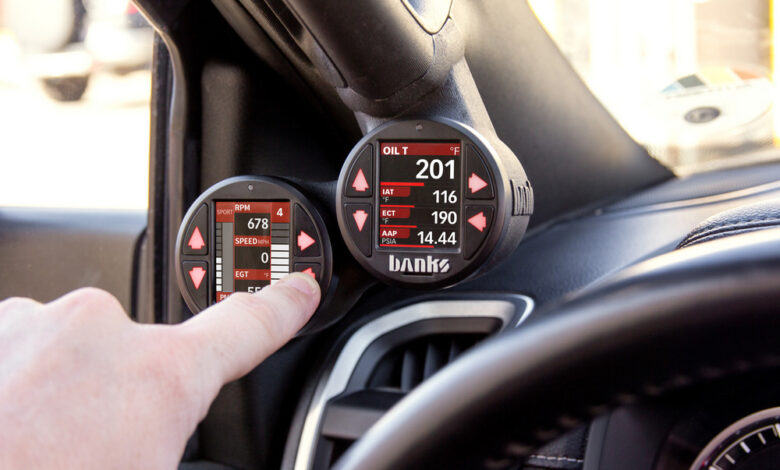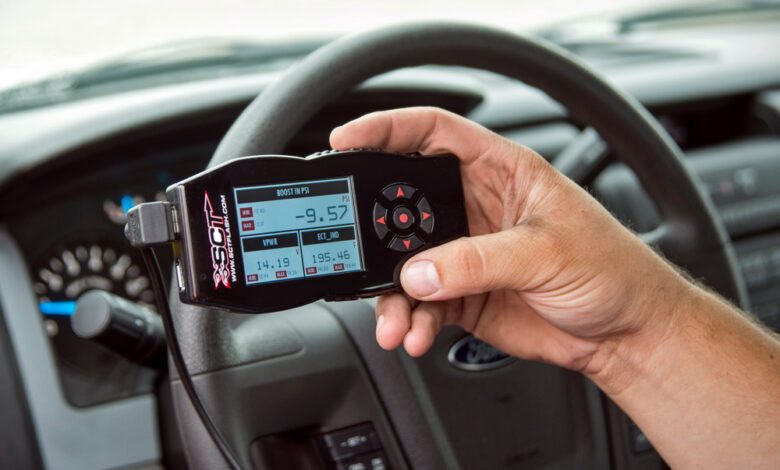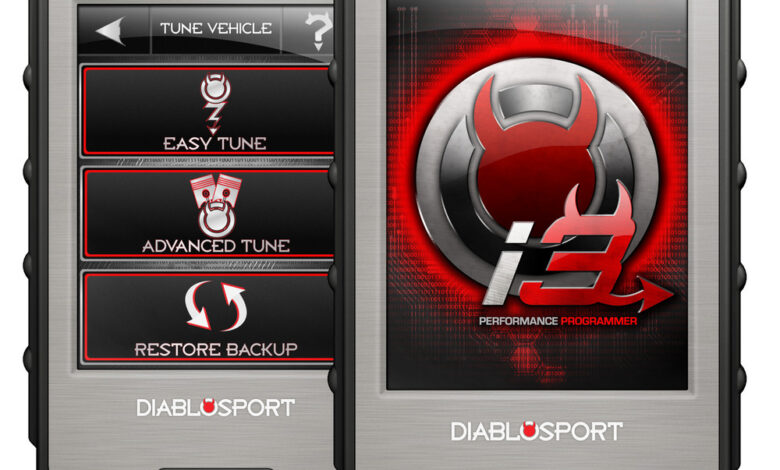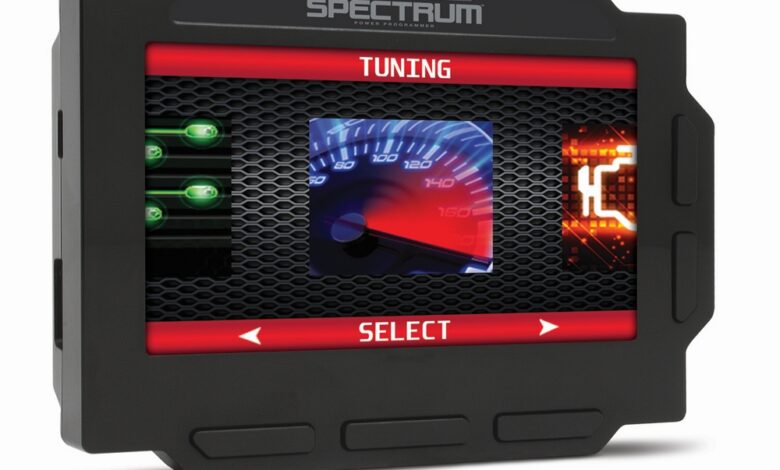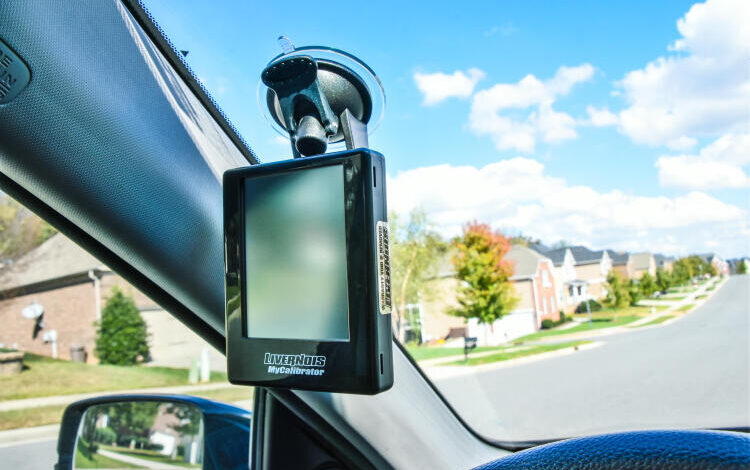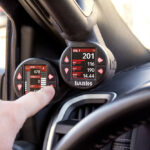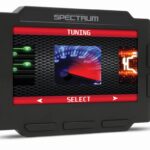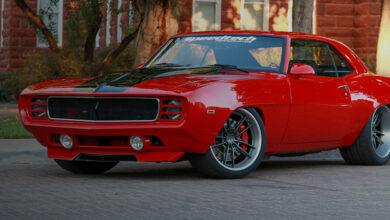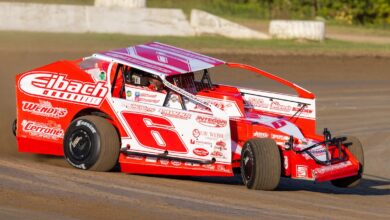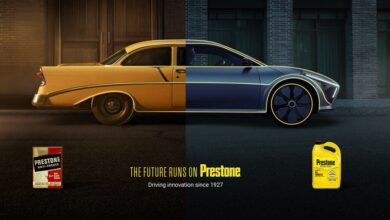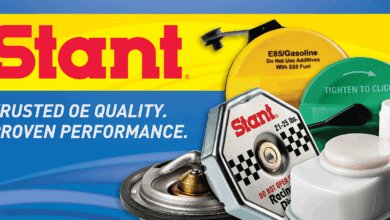This article originally appeared in the June 2023 issue of THE SHOP magazine.
Tuners and programmers are an important part of the specialty aftermarket, providing vehicle customization options for everything from track days to towing. Far beyond simple power enhancers, many of today’s products deliver a full menu of individualized settings to control everything from throttle response to speedometer readings, and everything in between.
Understanding their features and benefits, as well as the emissions regulations that govern what tuners are legally allowed to accomplish, will help shops steer enthusiasts in the right direction.
To help, suppliers outline what’s happening in the tuners and programmers market, trends to watch for and ways to make the most out of selling these high-tech products.
CHANGING TUNES
As with most new technology, innovations involving automotive tuners and programmers are constantly occurring.
“The past 10 years have seen a tremendous change in this market,” says Mike Litsch, senior category manager – domestic tuning for DiabloSport. “In 2013, almost any popular domestic vehicle that you wanted to tune could be tuned in your driveway. Today, we face multiple applications that require the PCM be removed from the vehicle and physically unlocked before it can be tuned.”
Beyond that, he adds, the OEMs have added security protocols that make in-vehicle flash tuning increasingly difficult.
The units themselves also do more, says Chris Fairless, director of sales for Hypertech.
“The market is always evolving as the computer systems become more complex,” he notes. “With that comes more challenges and opportunities. There is so much more to tuning products than just engine tuning.”
Meanwhile, enthusiasts are expecting more from their tuner purchases, notes Thomas Millen, VP of Livernois Motorsports and Engineering LLC.
“Consumers are looking for results that have traditionally matched custom tuning levels and are no longer satisfied with 10- to 15-hp gains on gasoline applications, while still demanding near stock-like reliability,” he says. “Coupled with the added complexity of modern vehicles, this means that the work going into the end product is far more involved than at any point in the past.”
With multiple engine options on some vehicles—and with some of those engines being redesigned every few years—the market requires endless development, he notes.
“Add in that almost all vehicles now utilize some form of encryption that must be broken or bypassed to allow for calibration, and it’s another technical layer being added to the mix,” says Millen.
Adhering to seemingly ever-stricter emissions regulations is now part of the process as well, says Jay Tilles, brand manager, Banks Power.
“Doing business in California for more than six decades, there has never been any other choice for us but to design and engineer 50-state-compliant tuners and programmers,” he says. “With ramped-up enforcement of the Clean Air Act, more retailers are requesting emissions-compliant tuning solutions. And, more importantly, with the price of diesel pickups going up, more owners are seeking reliable, compliant solutions that won’t break their truck or void their warranty.”
Understanding specifications for individual applications is becoming even more important.
“The level of sophistication has increased in terms of on-vehicle communications and depth of features when tuning a vehicle,” says Nader Rayes, brand manager for SCT/Bully Dog. “Due to those opportunities, the development time for tuners/programmers has increased significantly. Increased sophistication has pushed companies to be more specialized in certain vehicle brands.”
WATCH CAREFULLY
Keeping up with market changes can be difficult. Suppliers offer some areas to emphasize.
“Historically, failure to understand the product and how it aligns with the customer’s expectations is a hurdle that has existed for some time,” says Millen. “We work with our dealers to help them understand the capabilities and limitations during the sales process, but often that gets lost in translation before being relayed to the end user. Additionally, not reading or following the instruction manual, and not utilizing the tuners’ various functions remain common themes for shops and end users alike.”
Price can be an issue when selling tuner and programmer products—but not always in the way one might think.
“We find that some shops seek the least expensive solution for the customer,” Tilles observes. “Our theory is that many independent shops are owned by current or former mechanics and/or enthusiasts who put themselves in the customer’s shoes. They remember the days of having to save every penny. But the shop owner’s objective should be to both fulfill the customer’s needs and make money. The best solution is not always the least expensive. A benefit of upgrading customers to higher-priced parts is that there’s likely more engineering behind the products and the profit margins are typically greater.”
The more you work with the products, the better you can service your customers, says Rayes.
“Most experienced tuning shops know how to circumvent most issues. Mistakes and issues occur when a new vehicle is introduced to the market and the tuner is ambitious to be first to market in terms of engine tuning, without fully understanding the limitations of the vehicle communication parameters.”
To help, Litsch suggests planning an upgrade path for each project.
“Some customers will buy a tuner, install the tune and leave it alone for the duration of their time with the vehicle. Others are going to load the tune and immediately datalog it and try to improve it. Others will add a cold air intake a month or two down the road, then change wheels and tires,” he says. “Can the original tuner support all those changes in the future? We offer a variety of tuning products to meet the specific needs of most any consumer.”
Fairless reminds technicians to perform a tuner update before installing the programmer.
“This ensures that the tuner has the latest software program installed before it goes into the vehicle,” he says.
DIALING IT IN
When it comes to selling tuners and programmers, it helps to speak to enthusiasts in their own language.
“We believe that today’s buyers are more educated than ever before,” says Banks’ Tilles. “Gone are the days when the customer walks in and hands over his keys saying, ‘Do whatever you think is best.’ Product research is not only easier these days, it’s actually fun.”
Another way to grow sales, he reveals, is to demonstrate your expertise online.
“Shoot videos about what you do in the shop. What makes your shop unique? What makes you an expert? How is your method of tuning superior to the competition? Tell your story,” says Tilles. “Your customers will not only find your content engaging, but it will also build loyalty and increase credibility.”
Customer conversations should include an outline of everything the products have to offer.
“Take note of the specific features and options offered on each device. Tuning devices offer so much more than just power tuning these days,” says Litsch from DiabloSport. “Does the customer want to disable active fuel management/dynamic fuel management (AFM/DFM) or the multi-displacement system (MDS)? Do they want to adjust throttle sensitivity? Are they planning to install taller tires? Is idle speed control something they are after? All of these are features offered across our product lines that can help convince a customer that a tuning product is right for them.”
In fact, the word “tuning” doesn’t do the market justice when it comes to available options, says Hypertech’s Fairless.
“Not every customer needs or wants a tuning device,” he says. “However, there are lots of tuning options that come as standalones.”
Examples include:
- Disabling a vehicle’s auto start-stop and/or V-4 mode
- Optimized throttle response, including throttle tunes for off-road and towing
- Speedometer calibration
- Powersports products
SCT’s Rayes advises the best way to keep people legal while having fun is to talk openly about what you can and cannot do.
“Embrace the environmental pressure on the industry and tailor the tune and performance parts to be compliant,” he suggests.
It comes down to knowing your product, says Millen from Livernois.
“Knowledge, knowledge and knowledge. A growing majority of consumers are educated on the tunes and tuners available for their vehicles, meaning they expect the shop they are purchasing from to know at least as much as they do—but preferably more,” he says. “Additionally, having various marketing materials at the ready (such as YouTube videos and testimonials) with firsthand experience can help the customer gain confidence in the product and service being offered.”
